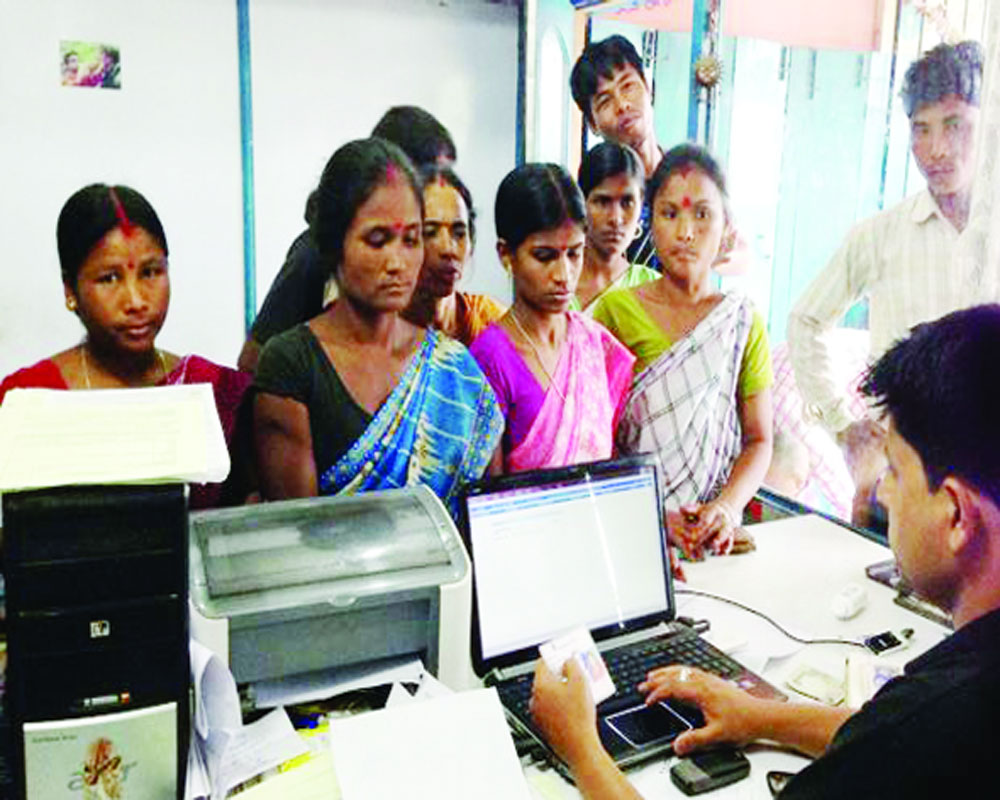Payments banks, which were supposed to be a game-changer in furthering the agenda of financial inclusion for all, have been not able to break even. They need smart segmentation both at the geographical and demographical levels to offer tailor-made products to the rural population
Undeniably, the ever-emerging role of financial institutions has stirred everyone in its own way. It is discoursed widely that future positioning of India on the world map will somehow depend upon its prospective digital stance. With the advent of digitalisation and financial inclusion, one more savings product namely, ‘payments bank’, was announced by the Reserve Bank of India (RBI). Despite the obvious economic relevance of this product, they are not able to break even. Why is it so?
Payments bank is nothing less than a deposit account, a micro-savings product which allows one to securely store money for a specific purpose or for an unexpected event in one’s life. In general, payments bank could facilitate money deposit of upto one lakh rupees, further offering remittance service, mobile payments, ATM/debit card facility and third-party fund transfer.
It excludes advancing loans or issuing credit cards. The sole purpose behind establishing payments bank is to harness technology to take a giant step towards financial inclusion. The idea is to propel the usage digitally with the help of the facilitator (payments bank). The reach and penetration to cater to the marginalised sections would be the driving factor to decide the success of payments bank using the electronic medium.
India’s unbanked population stood at 233 million in 2015 (PWC report). There are around 81 per cent wireless subscribers in India (TRAI, 2019). Urban wireless tele-density stood at 155.48 per cent whereas rural tele-density was at 59.15 per cent. Nearly 31 per cent of the population uses smartphones. Its penetration is projected to grow 34 per cent by 2020 (IAMAI report, 2017). A smartphone is a crucial tool of internet diffusion, especially in rural areas. Digital transactions are expected to grow four times to 8,707 crore by December 2021 (RBI report, 2019). The RBI’s vision 2021 is focussed upon exceptional payment experience and cash-lite society. This hints towards a huge untapped market for payments banks in rural India.
But payments banks have been reporting huge losses despite similar efficacious initiatives like Safaricom M-Shwari in Kenya. Kenya’s Commercial Bank of Africa partnered with a telco, Safaricom, to deliver M-Shwari, a product that among other things offers loans through the mobile channel leveraging telco data for underwriting.
Probably, granting micro-credit is the differentiating factor. The valued agent network proposition (M-Pesa) used by Kenyans is providing a leverage effect due to their portability of converting cash to electronic money and vice-versa. M-Pesa agents include small shops, gas stations, post offices and even traditional bank branches. There are more than 1,10,000 M-Pesa agents, 40 times the number of bank ATMs in Kenya. Going by the rule, the Indian counterparts are not allowed to give credit that has a trickling impact on market penetration.
All said and done, ‘saving’ is still very much an afterthought. Until payments bank offer micro-credit facility, they will not be of much help for the unbanked. A Financial Inclusion Insights survey conducted by Intermedia, a research company, found that the biggest reason for opening a saving account in Kenyan-based payments bank is due to an increase in customers’ loan limits.
The existing Indian model of opening only bank accounts and paying utility bills may remain insufficient to ensure long-run sustainability. Recently, Paytm tied-up with Citi Bank for credit card facility. The success of this move, however, needs to be seen. Also, investing 75 per cent of savings bank account money in Government securities and 25 per cent in a current and fixed deposit of conventional commercial banks will not empower sustainable revenue sourcing. Thus, the current business model and supplementary policy initiatives of the Government need a relook.
Last, in a country like India, it is crucial for payments banks to do aggressive branding and marketing of their product (especially in rural India) to spread awareness and change the deep-rooted mindset. Where payments banks could serve as the financial service gateways to re-bundle a host of innovative services.
One such wholesome combination could be a tie-up with MFIs. For instance, cross-selling water purifiers or LED bulbs, which not only address the challenge of clean water in rural areas/energy saving respectively but also extends the association beyond transactions. Farmers could leverage this service to connect with suppliers (for fertilisers, seeds and animal feeds), agronomists, information services and even outlets to sell their harvest; unleashing the true potential of payments bank in India. Payments bank need smart segmentation both at the geographical and demographical levels to offer tailor-made products for the rural, the unbanked and the women.
(Megha Jain is Assistant Professor and Senior Research Scholar, Daulat Ram College, Delhi, and Agnihotri is Assistant Professor, Lal Bahadur Shastri Institute of Management, Delhi)


























